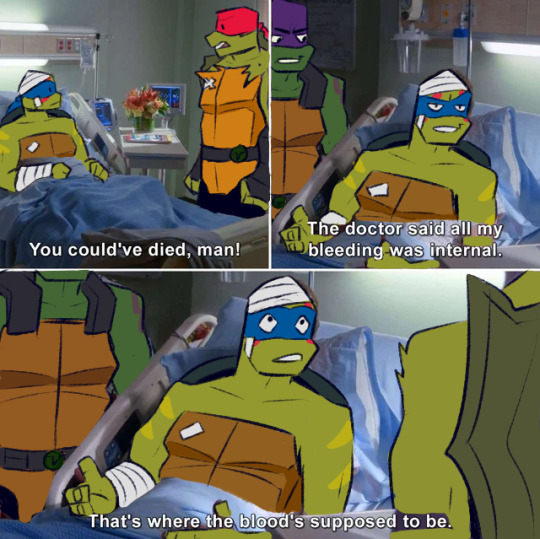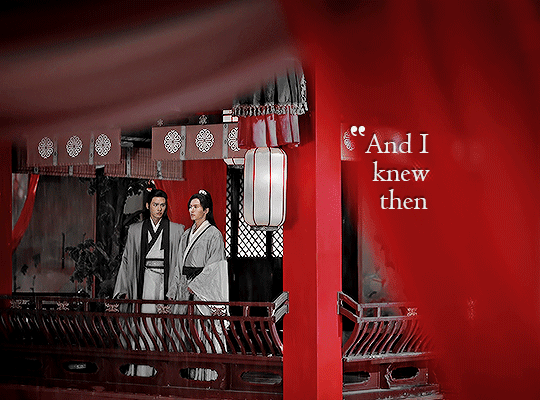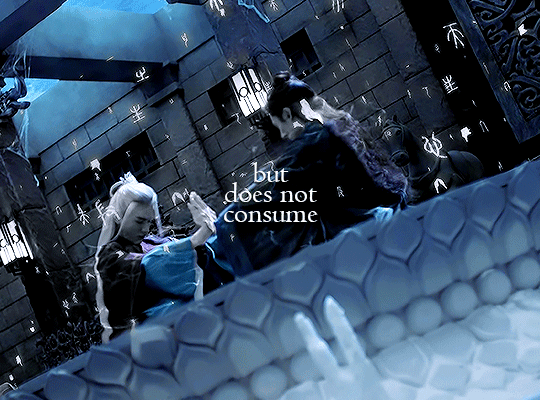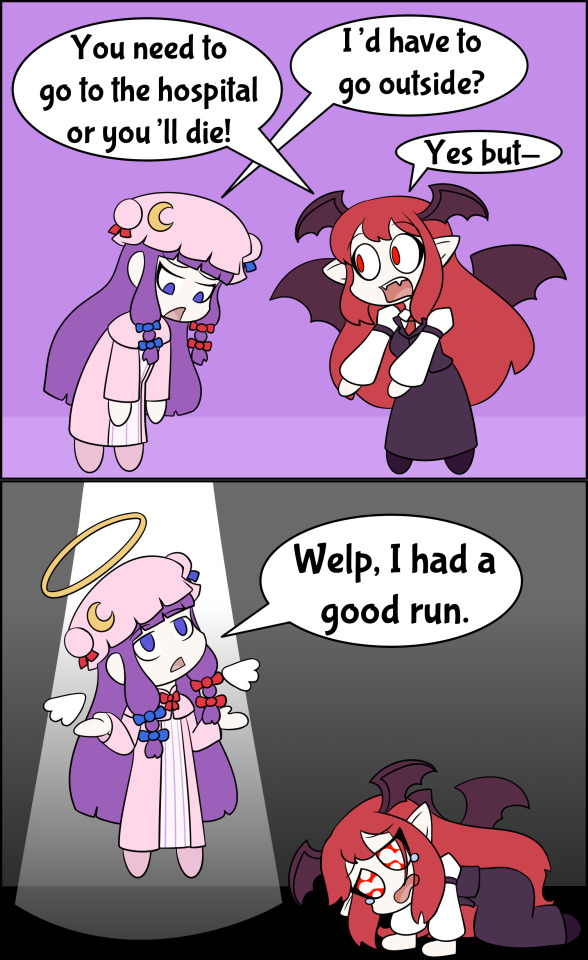#Hospital Projects
Explore tagged Tumblr posts
Text
Key Elements of Hospital Projects: From Planning to Execution
The process of developing a hospital involves much more than just building a facility. Successful hospital projects require detailed planning, strategic design, and flawless execution to meet the evolving needs of healthcare delivery. From laying the foundation to ensuring that every room serves its purpose, these projects demand a comprehensive approach that combines vision with precision.
At Altido Healthcare Consulting, we specialize in guiding healthcare organizations through every phase of the hospital project lifecycle, ensuring that the final product is efficient, patient-centric, and future-ready.

1. Strategic Planning: Setting the Foundation for Success
Every successful hospital project starts with detailed strategic planning. This phase is crucial because it sets the foundation for the entire project. Hospital planning and design is much more than deciding where to place walls and departments; it involves aligning the hospital's goals with the operational, technological, and patient care needs.
Key considerations during planning include:
Defining the hospital's mission and services: What kind of healthcare services will the hospital provide? Is the facility focused on specialized care, general medicine, or a combination of services?
Location analysis: The hospital’s location plays a vital role in accessibility for patients and staff. An analysis of the local population’s healthcare needs is essential.
Budget planning and financial forecasting: Projected costs, funding sources, and financial sustainability are all critical factors in planning.
2. Project Management Consulting: Ensuring Seamless Execution
Once the planning phase is complete, Project Management Consulting becomes essential to bring the vision to life. Managing a hospital project involves coordinating multiple teams, schedules, and resources to ensure the project stays on track. This is where expert project management consultants, like those at Altido, step in to streamline processes.
The role of project management consulting includes:
Timeline and milestone management: Keeping the project on schedule is crucial to avoiding delays and cost overruns.
Resource allocation: Ensuring that the right amount of resources, from labor to materials, is allocated at the right time.
Stakeholder communication: Facilitating regular updates between architects, engineers, hospital administrators, and construction teams to ensure everyone is aligned.
3. Hospital Planning and Design: Crafting a Patient-Centered Environment
The design of a hospital is one of the most important phases because it directly impacts the quality of care provided. Hospital planning and design must prioritize efficiency, safety, and patient comfort. The layout of the facility should allow for smooth patient flow, easy navigation, and functional workspaces for medical staff.
Some key elements of hospital design include:
Patient flow optimization: From the entrance to patient rooms, every aspect of the hospital’s layout must reduce stress and improve the patient experience.
Technology integration: Modern hospitals rely on advanced medical technologies, which should be incorporated into the design. This includes data infrastructure, telemedicine capabilities, and automated systems for patient records.
Sustainable and flexible designs: With healthcare needs constantly evolving, hospitals must be designed to accommodate future expansions and technological upgrades without disrupting operations.
4. Hospital Management Consulting: Enhancing Operational Efficiency
As the hospital nears completion, hospital management consulting becomes essential to ensure that the facility runs efficiently once it's operational. Hospital management consultants assess workflows, staffing needs, and operational protocols to optimize efficiency and patient care.
Altido’s hospital management consulting services help hospitals streamline:
Staffing models: Ensuring the right balance of medical professionals and support staff to meet patient demands.
Operational workflows: Optimizing how departments interact, from emergency care to surgery and outpatient services.
Compliance and regulatory adherence: Ensuring that the hospital meets all healthcare regulations, from safety standards to data protection.
5. Hospital Project Report: A Comprehensive Roadmap
A Hospital Project Report is the blueprint that ties the entire project together. It provides a detailed overview of every phase, from planning to execution, offering stakeholders a clear picture of the hospital’s scope, timeline, and budget. A well-prepared project report ensures transparency and accountability, helping decision-makers track progress and adjust strategies as needed.
The hospital project report should include:
Project goals and objectives: A clear definition of what the hospital aims to achieve.
Financial analysis and forecasts: Detailed breakdowns of costs, expected returns, and funding sources.
Regulatory compliance checks: Ensuring the project adheres to all healthcare laws and safety standards.
Risk assessments: Identifying potential challenges and contingency plans to mitigate risks.
Conclusion
Building a hospital from the ground up requires more than just a vision; it demands careful planning, skilled project management, and ongoing operational support. By focusing on the key elements of hospital projects—from planning and design to execution and management—healthcare organizations can create facilities that not only meet current needs but also adapt to future healthcare challenges.
At Altido Healthcare Consulting, we bring a holistic approach to hospital projects, combining hospital planning and design, project management consulting, and hospital management consulting to ensure that every aspect of the project is handled with expertise. With a comprehensive hospital project report guiding the way, hospitals can be confident in their ability to deliver world-class care in a state-of-the-art environment.
#hospital planning and design#Project Management Consulting#Hospital Projects#hospital management consulting#Hospital Project Report
0 notes
Text
Thinking about the Bats suppressing their injuries and how yes, they have crazy high pain tolerance, and yes, they are in peak human condition, but ALSO, they do Too Much Shit sometimes and have definitely made injuries worse by accidentally ignoring them
Like, imagine one of them throws out their back doing something Totally Normal and Mundane so they just. Ignore it. Because I literally sneezed, it can’t be that bad, right?
(Spoiler alert: it is that bad)
Tim, moving more slowly than normal and grimacing every few seconds: damn maybe I pulled something
Jason, stopping by to pick up some things he needs while Bruce is out: ?? What’ja do?
Tim: I dunno, but my back really fucking hurts and I’m starting to get all numb and tingly
Jason: ?!?!?
Jason: How long has it been hurting????
Tim: I don’t know??? I guess, like, a few hours???
Jason: What did you do????
Tim: I DON’T KNOW, MAN, IT STARTED AFTER I SNEEZED
Jason, laughing: YOU HURT YOURSELF BY FUCKING SNEEZING????
Tim: THAT LITERALLY CANNOT BE THE CAUSE
Jason: I dunno man, kinda sounds like it
Jason, in tears: Maybe it’s time to retire
Tim: FUCK YOU IM FINE
Tim: WATCH I’LL PROVE IT
Tim, about to do a backflip: oh fuck- OW
Tim: *passes out from the pain*
Jason, still laughing his ass off: Nice landing, Timmy!
Tim:
Jason: Timmy?
Tim:
Jason: Tim?
Jason: oh shit—
#inspired by ✨real life✨#it’s me I’m the loser who threw my back out by sneezing#and I dissociated for 3 hours while I finished my shift then nearly passed out driving home#I had a friend drive me to the hospital so I’m okay now#but apparently it’s really common to throw your back out doing very mundane things if it’s under enough strain to begin with#I fully believe this would happen to one of them#and no I’m not just projecting#incorrect quotes#tim drake#jason todd#batfam#batfamily
7K notes
·
View notes
Text

06. The Hill (6/60)
#malevolent fanart#malevolent podcast#john doe malevolent#mal finale project#they really did ride a lot of boats in season 1 huh#the og was them eating in the diner after the hospital but i didn't want two window comps back to back#we'll save that for season 4 with noel lol
628 notes
·
View notes
Text



OHH btw here's Maru peeks for the stardew mod i've been working on... I haven't given up i just had a lot of stuff happen that made me pause work on it lmao
#droodles#stardew valley#maru#sdv maru#sdv#sdv portraits#MARU she was the one who started the whole project bc none of the replacers matched my Vision for her (ie bubble braids)#i need to do a little editing on her hospital sprites i didnt draw her hair curly enough i was rushing so bad i cant let it sit as is lmao#also gave her a cane in her little walking sprites.... hehe
2K notes
·
View notes
Text




today i offer you tmnt art. tomorrow???? ¯\_(ツ)_/¯
#half a year ago if you would've told me i was gonna get obsessed with teenage mutant ninja turtles i would've laughed. but here we are.#rottmnt#rise of the tmnt#rottmnt leo#rottmnt donnie#rottmnt mikey#rottmnt raph#rottmnt april#pizza time with the boys!#im gonna have to censor the hospital one to post on insta so that'll be fun#pov ur friend never got her mystic pizazz for her project so she still needs your help instead#the comic is from a stupid tiktok
3K notes
·
View notes
Text

TY GIGAI HIHIHI i love dem <3
#my friend kat (katwithak246) was headcanoning that kanade would visit saki sometimes in the hospital back then#LIKE...HELLO? COOK.#also funny thing was me watching eye art tutorials in the middle of rendering bc i thought my style for drawing eyes didnt fit the vibe KJD#like they were all dolled up in those outfits🥺the cutiepatooties need to look dolled up!!#kanasaki#sakikana#kanade yoisaki#saki tenma#project sekai#prsk#pjsk#artsdrop#25 ji nightcord de#leo/need#leoni#niigo#nightcord at 25:00
284 notes
·
View notes
Text

wgahtt the h ell Stupid idiot 70 year old man. As always, headcanons over yonder
> He wanted to spend his retirement collecting Hatsune Miku Figmas but Tom made him go outside instead > He became an amateur survivalist out of spite and feelings of injustice, but this lead to him eating random shit in the forest without double checking. [Still works for spite reasons, he makes sure Tom finds him poisoned near their house to prove a point] > Right side of his hair is all stiff and curly, bc accident reasons, it was always like that but its much more prominent now > He dyes his hair more often now than he did when he was 40 > The hoop earring he has is his only piercing AND is also the partner earring of Tom's own hoop earring


"Thomas, I frew up"

#eddsworld#ew Stay AU#tomtord#mentioned#ew tord#ew future tord#dandraws#his camo jacket was a spite buy#He went up to Tom on the day he bought it like: “HAPPY THOMAS?? TOUCH GRASS?? FINE I'LL BECOME BEAR GRYLLS”#Tom: “Okay have fun uvu”#He gets hospitalized immediately#Also me making him go outside is basically just#me projecting an aspect of Tori onto him#We project more tordsy stuff onto tori most of the time so like#why not an equivalent exchange??
268 notes
·
View notes
Text
hacks writers and thank god for that

#performing to an audience but she pretends she is only performing for u.#rushing to the hospital bc she forgot to change u as her emergency contact.#celebrating ur joint creative project making it to air together with only each other even though u planned to avoid each other.#bc of your nasty falling out. and that was just TODAY !#callie speaks#hacks hbo
142 notes
·
View notes
Text
Pond Naravit didn’t spend the better part of four years collecting his dance line friends like Thanos going after Infinity Stones to form Project JASP.ER for people on the internet to pretend like none of the artists at GMMTV have any control over their lives and careers.
#pond naravit#project jasp.er#joong archen aydin#joong archen#aou thanaboon#santa pongsapak#jasp.er#gmmtv#riser music#look any company has its pitfalls and poor choices#but enough members of that company have managed to make things happen and determine their next move#rather than be controlled#unlike some companies#Aou’s face when joong explained what he went through in China#and how many Chinese artists and actors suffer#people also bitch about EMFK not being out at jobs enough when they’re the most well known introverts in the company#things i think about#also the level of creative control the boys of JASP.er were allowed to have creatively#or how much krist ends up in the hospital every time they give him a concert because he’s stressing making his vision#like there are boundaries and things they can’t do sure#but that’s work
120 notes
·
View notes
Text
Hello, yes, I need more cards where the characters interact with their younger selves.
I want more of this please:


#project sekai#project sekai colorful stage#hatsune miku colorful stage#proseka#prosekai#colorful stage#i didn't include toya's nocturne interlude trained card because while he is with his younger self#they aren't really interacting together? they're both just there playing their respective instruments#i want older toya to show younger toya that he found something someone that made him happy and enjoy music#i want to see older ena helping little ena with a drawing like she did for those school kids with emu and honami#i want to see older tsukasa put on a show for his younger self#or even just tell him that he's found more people who would help him pursue his dreams#saki holding her younger self the first night she has to spend in the hospital#honami baking with little honami#kanade holding out the music box (i can't remember if it was her mom's or her dad's) so her younger self can wind it up#mafuyu carrying her younger self away from something that looks harmful towards something that says safety#ichika telling little ichika all about leo/need's sekai and miku#emu is telling her younger self all about wxs and how they helped her save the wonder stage#do i need to go on?
884 notes
·
View notes
Text

Idiot codependent teenagers aka She has never had a thought in her life and he has the self esteem of Nagito komeda
#I love Muu she is insane#never once considered someone else’s feelings type girl#I need to put them both in a mental hospital#milgram#milgram fanart#haruka sakurai#muu kusunoki#milgram haruka#milgram muu#milgram memes#fanart#art#milgram project#meme redraw
367 notes
·
View notes
Text
Hospital Projects: Key Steps for Successful Healthcare Facility Development
Developing a new hospital is a complex endeavor that requires meticulous planning, coordination, and execution. Whether it's building a brand-new facility or expanding an existing one, successful hospital projects depend on a clear strategy that prioritizes patient care, operational efficiency, and long-term sustainability. To ensure the success of healthcare facility development, organizations must follow key steps that guide the project from conception to completion.
1. Conducting a Feasibility Study
Before diving into any hospital project, a thorough feasibility study is essential. This study assesses the project’s viability, taking into consideration factors like community healthcare needs, financial constraints, and regulatory requirements. A well-executed feasibility study will help determine whether the project can move forward and what adjustments may be needed.
Key components of a feasibility study include:
Demographic Analysis: Understanding the population the hospital will serve is crucial for determining the size, scope, and services of the new facility.
Financial Projections: Accurate budgeting ensures the project is financially sustainable and can attract investors or funding from stakeholders.
Site Evaluation: Assessing the location for accessibility, zoning regulations, and environmental impact is vital to the project’s success.
2. Defining Project Scope and Goals
Clearly defining the scope and goals of the hospital project helps avoid costly changes and delays during construction. This step involves determining the size of the facility, the number of beds, specialized departments, and services that will be offered.
Key considerations include:
Capacity Planning: Estimating the future demand for healthcare services is critical for determining the appropriate size and layout of the hospital.
Specialized Services: Deciding which specialized services—such as maternity, oncology, or surgery—will be offered helps shape the overall design and equipment needs.
Patient-Centric Design: Incorporating design elements that improve patient experience, such as private rooms, easy navigation, and access to natural light, is key to creating a welcoming and functional healthcare environment.
3. Engaging Stakeholders and Assembling a Project Team
Effective communication and collaboration between stakeholders is essential throughout the hospital development process. Engaging all relevant parties—such as hospital leadership, government officials, healthcare providers, and the local community—ensures that the project aligns with the needs and expectations of everyone involved.
Building a multidisciplinary project team is equally important. This team typically includes:
- Project Managers: They oversee the hospital project from start to finish, ensuring deadlines are met, budgets are adhered to, and goals are achieved.
-Architects and Engineers: Specialized architects and engineers are needed to design a facility that meets healthcare standards and integrates the latest technology.
- Contractors: Experienced contractors are essential for executing the construction according to the project’s plans and specifications.
4. Planning the Hospital Design
Effective hospital design is a critical component of any hospital project. The design should not only focus on aesthetics but also on functionality, patient comfort, and future flexibility.
Key elements of hospital design include:
- Efficient Layouts: Properly planned layouts reduce staff movement, improve patient care, and streamline workflows. For example, placing departments with high patient flow close to one another minimizes transit times.
- Sustainable Design: Incorporating energy-efficient systems, renewable energy sources, and sustainable materials can significantly reduce the hospital’s long-term operating costs while promoting environmental responsibility.
-Adaptability: Hospitals need to be flexible and scalable to accommodate future growth and technological advancements. Modular construction techniques or flexible spaces allow for easier expansion.
5. Securing Funding and Budget Management
A major challenge in developing any hospital project is securing adequate funding. Hospitals are significant financial investments, and developers must explore various financing options, including government grants, private investments, and public-private partnerships.
Budget management is equally critical, as construction delays, scope changes, or unexpected costs can derail the project. Key steps to effective budget management include:
- Detailed Cost Estimates: Accurate cost projections for construction, equipment, and staffing help avoid financial shortfalls.
- Contingency Planning: Setting aside a contingency budget ensures that unforeseen expenses can be handled without jeopardizing the overall project.
6. Navigating Regulatory Compliance and Approvals
Hospital projects are subject to a range of regulations and standards, from local building codes to healthcare-specific accreditation requirements. Navigating these regulatory hurdles can be time-consuming but is essential for ensuring that the facility operates legally and safely.
Important regulatory considerations include:
-Healthcare Facility Accreditation: Hospitals must meet the standards set by healthcare accrediting bodies, such as The Joint Commission or country-specific health agencies.
- Building Codes and Safety Regulations: Compliance with local construction codes and safety standards, including fire safety, electrical systems, and emergency exits, is necessary for securing building permits.
- Environmental Regulations: Environmental impact assessments and compliance with green building initiatives help mitigate the facility’s impact on the surrounding area.
7. Construction and Project Execution
Once the planning, design, and funding phases are complete, the actual construction process begins. Effective project execution requires strong coordination between the project team, contractors, and suppliers. Maintaining open lines of communication ensures that construction stays on schedule and that any issues are addressed promptly.
Critical success factors for this phase include:
- Timely Milestone Tracking: Setting key construction milestones and closely monitoring progress helps avoid delays.
- Quality Control: Regular site inspections ensure that the work meets the required quality standards and that any issues are identified early.
8. Post-Construction and Operational Readiness
After construction, the hospital project enters its final phase—operational readiness. This involves testing the facility’s systems, training staff, and ensuring that all equipment is properly installed and functional.
Post-construction activities include:
- System Testing: Conducting rigorous tests on HVAC, electrical, plumbing, and medical systems ensures they are operational and meet safety standards.
- Staff Training: Properly training hospital staff to use new equipment and technologies is crucial for smooth hospital operations.
- Final Inspections and Licenses: The facility must pass final inspections by regulatory bodies to receive the necessary licenses and accreditations to operate.
Successful hospital projects depend on a well-coordinated approach that addresses every stage of development, from feasibility studies to post-construction. By following key steps such as defining the project scope, assembling a skilled team, securing funding, and ensuring regulatory compliance, healthcare organizations can build state-of-the-art facilities that meet both current and future healthcare needs. Effective hospital planning and design are essential for creating functional, patient-centered environments that promote quality care and operational efficiency.
0 notes
Text







— evening sun, jane kenyon
as long as he lives one day, I'll live that day with him.
#word of honor#wenzhou#shl#rowan gifs#userbon#tusermona#lextag#baek1nho#userginpotts#roserayne#tuserashinlae#userpetri#thank u lex and mona and sara for encouragement <3#i feel like it's a little cheeky to use that tian ya ke quote. hehehe whose perspective did you Think it was from (youre right either way)#sometimes you see a poem and it is sooooooooo them and you projecting on them that you drop everything to work on it for a week and a half#even multiple times the day you are in the hospital#[pats gifset] he is humble but this baby can fit so much rowan's feelings in it
326 notes
·
View notes
Text

Patchy, you have to go, now.
#東方Project#Touhou#霧雨魔理沙#Touhou_Project#comic#patchouli knowledge#koakuma#hospital#heaven#demon girl#art#chibi#fanart#game#touhou project
193 notes
·
View notes
Text



might as well compile these sketches and dump these into one post
#team galactic#and a volo#team galactic boss cyrus#pla volo#team galactic saturn#commander saturn#sketch#irl friend said cyrus looks like “one of those anime moms” at the 'cyrus being sick' doodle and i can't stop thinking abt it now#also subconsciously projected him into the hospital bed from monster (2004) i guess he and johan were ward-mates idk
65 notes
·
View notes
Text
if bakudeku isn't canon why do we keep winning
#twin stars of 1-a number 1 and 2 in every poll best chapter poll a spot in the fanart contest#bakudeku colored kyoto tower the entire apology scene deku vs kacchan 2 the fact that izuku didn't even tell his mom about ofa#but he felt like he HAD to tell katsuki the hospital scene katsuki running off to his hospital room after getting impaled for him#that jump shop display of them with hearts around it the cover of them smiling together the fucking suit project lead by katsuki#the mv that jump just posted like what are we supposed to think about all this be so fr#how are we delusional when if one of them were a girl people would be screaming about how all of this shit is clearly romantic#bkdk#bakudeku#dkbk#dekubaku#ktdk#katsudeku
62 notes
·
View notes